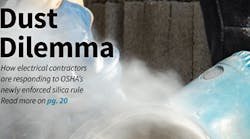Previously, we explained what the first section of the MSDS covers. But what about the other seven sections? Here's a short recap you might find helpful.
Section 2, Hazardous Ingredients, lists the amount of much of each hazardous ingredient and tells you how toxic it is.
Section 3, Physical/Chemical Characteristics, helps you identify the material by how it looks and smells. It may provide exposure control information.
Section 4, Fire and Explosion, tells you the temperature at which the material gives off vapor that will burn (its flashpoint) and (if applicable) provides fire control information.
Section 5, Reactivity, lists which chemicals may interact with this material to produce fumes, heat, or other dangers — and under what conditions.
Section 6, Health Hazard, explains the effects of exposure and where in the body the effects occur.
Section 7, Safe Handling and Use, covers safe usage, storage, disposal, and spill cleanup.
Section 8, Control Measures, prescribes exposure reduction measures.


